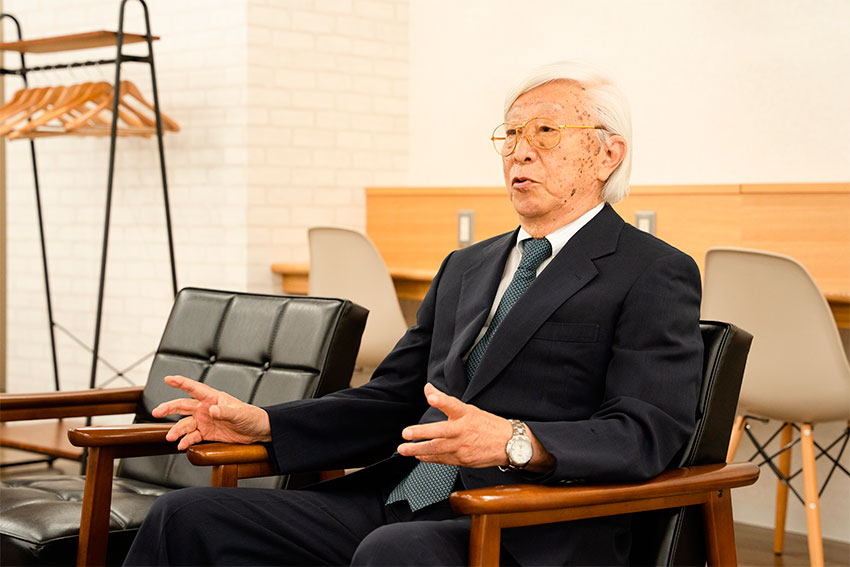A small company with big ideas, Hugle Electronics is helping to tackle some of the greatest challenges in semiconductor manufacturing with its range of state-of-the-art micro-particle and electrostatic removal equipment.

“Our philosophy is to constantly develop new products and I believe that this philosophy will never change.”
Wasaburo Fujimiya, President, Hugle Electronics
“My philosophy is the smaller the business, the better it is,” says Wasaburo Fujimiya,
President of Hugle Electronics. “Now more than ever, we focus on developing new products and novel ideas.”
In an industry dominated by “large conglomerates and powerful multinationals”, Hugle – a company with less than 100 employees – has built a solid reputation over its 51-year history.
as an innovative solutions provider in the field of micro-particle and electrostatic removal equipment.
“Hugle’s long-established Static Electricity Remover, Ultrasonic Dry Cleaner and Carrier Cleaning System laid the foundation for today’s products, contributing to the development of the semiconductor, FPD (flat panel display), and lithium-ion battery (LiB) industries, and improving yields in cutting-edge microfabrication,” adds Mr. Fujimiya.
Firmly committed to innovation, Hugle today has tasked itself with solving some of the main challenges in the semiconductor industry – firstly, the removal of contaminants (including airborne molecular contamination: AMC) as semiconductors and subsequent manufacturing processes get increasingly smaller; and secondly, the reduction of the industry’s impact on the environment.
One eco-friendly technology recently developed by Hugle is its latest FOUP Cleaning system "SF-300". Despite being more compact than previous models, the SF-300 boasts improved efficiency while also having a lower environmental footprint. “By replacing old machines with the SF-300, our customers can double or even triple their production efficiency. This increase in performance will allow our clients to lower the environmental burden of their activities,” says the Hugle president.
“When it comes to reducing the utilization of toxic chemicals, our products use as little organic solvents and neutral detergents as possible, and water and air are the main power sources,” he adds. “With the power of our proprietary technologies, we are determined to steadily pursue the path of becoming an eco-friendly and environmentally friendly manufacturer.”
When it comes to particle and contaminant removal, Hugle has strived to improve its technologies through R&D in order to cater to ever-evolving industry demands, with the company opening a brand new R&D center in 2019 to further bolster its development capabilities.
On top of removing dust and contaminants, Hugle’s clients have recently requested technologies for the removal of ammonia, HCl and other compounds. This process is focused on AMC removal, an area in which the company is researching technologies, while it also has a joint research project with a Kyushu-based university focused on the removal of microscopic contaminants, as demanded by its clients. Such extensive R&D serves as testament to Hugle’s commitment to developing innovative solutions, and is sure to bear fruit with the creation of technologies like the company’s existing Ultrasonic Dry Cleaner.
Hugle’s Ultrasonic Dry Cleaner uses ultrasonic vibrating air to excite particles adhering to the surface of products before collecting them with a suction slit without scattering them, later employing a circulating system that purifies the collected air and reuses it for discharge air. Since its launch in 1976, it has been used in production lines in a wide variety of industries, including the electronics, semiconductors, flat panel displays, printed circuit boards, and rechargeable batteries. And it is in the latter field in which Hugle’s technology will play an increasingly important role.
“Recently, dust control in the rechargeable battery industry has become an urgent issue,” adds Mr. Fujimiya. “Because the separators of high energy density batteries are becoming thinner, small particles on the electrode can penetrate through the separator and cause short circuits. In response, we developed a special cleaner which can remove particles on the electrode effectively.”
Moving forward, Hugle will work closely with electric vehicle makers to offer electrostatic and particle removal solutions for LiBs, yet another area in which the company’s long-established know-how will help to improve complex manufacturing processes.
0 COMMENTS